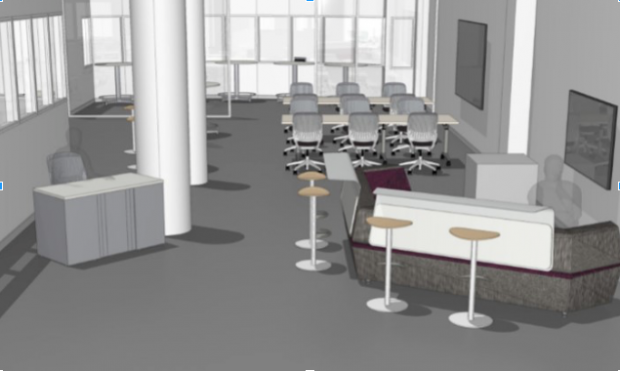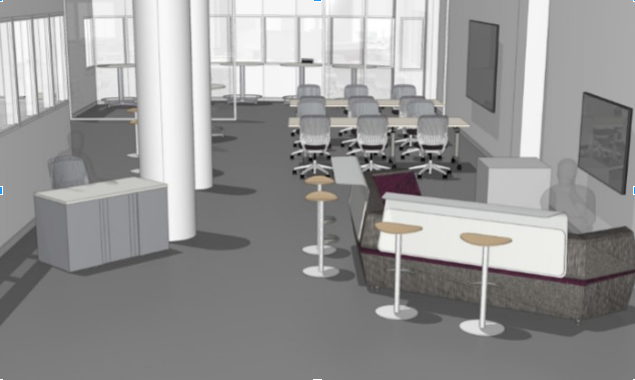
This fall, students and faculty will have the opportunity to experience the new St. Thomas E-Learning And Research center located on the lower level of the O’Shaughnessy-Frey Library.
The STELAR center, in partnership with the libraries, Academic Affairs, and Faculty Development, is devoted to applying new and emerging technologies to further the teaching and learning mission of the university. The STELAR center provides technological applications and digitial tools in classrooms as well as a place for faculty collaboration and research. The applications of STELAR are not limited to one field of study or a single educational program, rather STELAR combines technology and educational practices in the development of online degree programs and blended(hybrid) courses for graduate and undergraduate students. Coup and Chief Information Officer Edmund Clark are looking forward to seeing the STELAR center enhance the educational experience of St. Thomas students.
“The physical space is going to be a really neat place for both faculty and students to collaborate, to work, and to get help,” Associate Vice President of Academic Technology Brett Coup said. “It revolves around technology and innovation.”
One attribute of STELAR, a form of research support, is intended to help faculty complete the research they are currently working on through high-powered, high-speed computing, statistics and programming support.
Clark said he hopes the center will also aid faculty in using the Scholarship of Teaching and Learning to incorporate technology into classrooms.
“The idea will be, can we use technology in the classroom to get students to be more engaged with the hopes of obtaining better learning outcomes, better retention and completion,” Clark said.
STELAR will continue to complement the use of current academic technology in classes around the university by creating more Blackboard-based assignments and applications. The STELAR Center will function as a location for questions about this technology, while improving the experience of online work outside of classes as an extension of the in-class experience students receive. Coup also mentioned other tech-tools like the Classroom Clicker, and apps like Kahoot! or Poll Everywhere.
As for digital tools in face-to-face classrooms, Coup is excited about the technology showcase area within the STELAR Center, which will include virtual reality glasses and other computing technologies students can physically experience.
“It will be interesting to have faculty come in and see how they might use that in their teaching and incorporate that into their classes,” Coup said.
Teleconferencing is one of the unique technologies STELAR will bring to the classroom and the university campus.
“Video is going to be part of the future of education,” Clark said, “Brett’s team is helping John Olson and the (Opus) College of Business deliver his course via Blue Jeans tele-video conferencing, so students are attending even via their phones in the Data Analytics course.”
Another initiative of STELAR is the creation of more online degrees and blended courses in order to expanded the educational opportunities students have through the university.
“There’s been ten years of learning how to deliver online courses and best practices, so we can help faculty here see how to develop their online classes in a way that will preserve what’s good about how we teach here and what we do here, but move it into the online delivery method,” Coup said.
These new courses still count for regular credit and have the same outcomes as any course, but happen to have less seat time, and consequently more time spent doing online work and using Blackboard. Online and blended courses are likely to be offered during the summer as well as J-term.
“STELAR seems very innovative and advantageous as a center and a resource,” sophomore Rosendy Desir said, “Seeing as its goal is to augment students’ school experience and help facilitate a more interactive and wide-ranging online course, I would confidently consider taking a hybrid or online course if it was offered by St. Thomas and the STELAR center was available.”
“Online courses are a staple of higher education in the future,” said Coup, “If we’re not participating in that and thinking about how to do that in a smart way, then we’re the ones left behind.”
Emily Sweeney can be reached at swee4225@stthomas.edu


